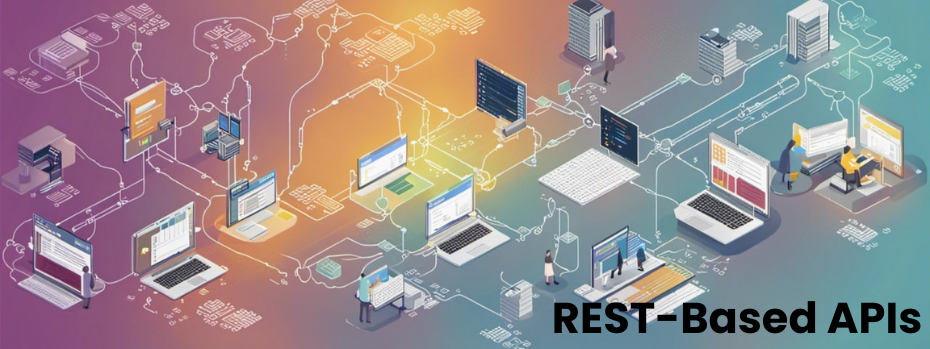Blog
Exploring the Characteristics of REST-Based APIs: Building Blocks of Modern Web Development
- April 1, 2024
- Posted by: admin
- Category: Technology

Introduction:
Welcome to our comprehensive guide on the characteristics of REST-based APIs. In today’s interconnected world, REST (Representational State Transfer) has emerged as the de facto standard for designing web APIs due to its simplicity, scalability, and flexibility. In this post, we’ll delve into the fundamental characteristics that define REST-based APIs and their significance in modern web development.
1. Stateless Architecture:
One of the key principles of REST is its stateless architecture. Unlike traditional client-server communication, where the server maintains session state, RESTful APIs treat each request as an independent transaction. This design simplifies scalability, improves reliability, and enhances performance by eliminating the need for server-side session management.
2. Resource-Based:
RESTful APIs model data and functionality as resources that can be uniquely identified by URIs (Uniform Resource Identifiers). These resources represent the entities that the client interacts with, such as users, products, or orders. By leveraging standard HTTP methods (GET, POST, PUT, DELETE), clients can perform CRUD (Create, Read, Update, Delete) operations on these resources, making the API intuitive and self-descriptive.
3. CRUD Operations via HTTP Methods:
HTTP methods play a crucial role in defining the operations that clients can perform on resources. For instance, GET is used to retrieve resource representations, POST creates new resources, PUT updates existing resources, and DELETE removes resources. By adhering to these conventions, RESTful APIs promote uniformity, predictability, and ease of use across different client applications.
4. Stateless Communication:
RESTful APIs communicate statelessly over the HTTP protocol, meaning each request from the client contains all the necessary information for the server to process it. This enables scalability and fault tolerance, as any server in a distributed system can handle requests independently without relying on shared state or session affinity.
5. Representations and Media Types:
Another characteristic of RESTful APIs is the use of representations to convey resource state between the client and server. These representations can take various formats such as JSON (JavaScript Object Notation), XML (eXtensible Markup Language), or even HTML. Additionally, RESTful APIs leverage media types (e.g., application/json, application/xml) to indicate the format of the representation being exchanged, allowing for content negotiation between clients and servers.
6. HATEOAS (Hypermedia as the Engine of Application State):
HATEOAS is a constraint in REST architecture that encourages the inclusion of hypermedia links in API responses. These links provide navigation paths to related resources, allowing clients to discover and interact with the API dynamically. By decoupling clients from specific URIs and server implementations, HATEOAS promotes loose coupling, flexibility, and scalability in distributed systems.
